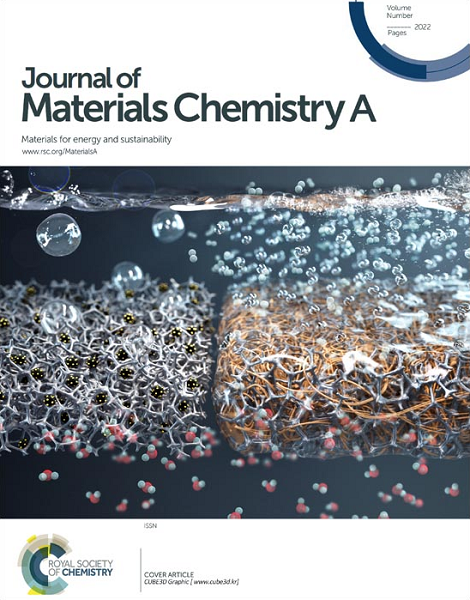A Polysulfide/Ferricyanide Redox Flow Battery with Extended Cycling
IF 9.5
2区 材料科学
Q1 CHEMISTRY, PHYSICAL
引用次数: 0
Abstract
The inexpensive sulfur raw material is promising to enable cost-effective redox flow batteries for long duration energy storage. But the catastrophic through-membrane crossover of polysulfides remains a severe challenge resulting in irreversible performance degradation and short cycle life. In this work, we demonstrate that use of a permselective cation exchange membrane yields two orders of magnitude enhancement in polysulfide retention compared to the benchmark Nafion membrane. Combined physico-chemical, spectroscopic, and microscopic analyses unravel smaller ion transport channel sizes in the microstructure of this membrane that contribute to the effective mitigation of polysulfide crossover. As a result, the cycle life of polysulfide/ferricyanide flow cells is boosted over a substantially extended test time. This finding sheds light on the fundamental membrane factors that cause polysulfide permeation and can suggest feasible directions in the development of permselective membranes for polysulfide flow batteries.长循环多硫/铁氰化物氧化还原液流电池
廉价的硫原料有望使具有成本效益的氧化还原液流电池实现长时间储能。但多硫化物的灾难性穿膜交叉仍然是一个严峻的挑战,导致不可逆的性能下降和短的循环寿命。在这项工作中,我们证明了与基准的Nafion膜相比,使用过选择性阳离子交换膜在多硫保留方面提高了两个数量级。结合物理化学、光谱和微观分析,揭示了该膜微观结构中较小的离子传输通道尺寸,有助于有效减轻多硫化物交叉。因此,多硫化物/铁氰化物液流电池的循环寿命大大延长了测试时间。这一发现揭示了导致多硫化物渗透的基本膜因素,并为多硫化物液流电池的过选择膜的开发提供了可行的方向。
本文章由计算机程序翻译,如有差异,请以英文原文为准。
求助全文
约1分钟内获得全文
求助全文
来源期刊

Journal of Materials Chemistry A
CHEMISTRY, PHYSICAL-ENERGY & FUELS
CiteScore
19.50
自引率
5.00%
发文量
1892
审稿时长
1.5 months
期刊介绍:
The Journal of Materials Chemistry A, B & C covers a wide range of high-quality studies in the field of materials chemistry, with each section focusing on specific applications of the materials studied. Journal of Materials Chemistry A emphasizes applications in energy and sustainability, including topics such as artificial photosynthesis, batteries, and fuel cells. Journal of Materials Chemistry B focuses on applications in biology and medicine, while Journal of Materials Chemistry C covers applications in optical, magnetic, and electronic devices. Example topic areas within the scope of Journal of Materials Chemistry A include catalysis, green/sustainable materials, sensors, and water treatment, among others.
 求助内容:
求助内容: 应助结果提醒方式:
应助结果提醒方式:


